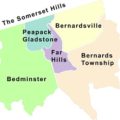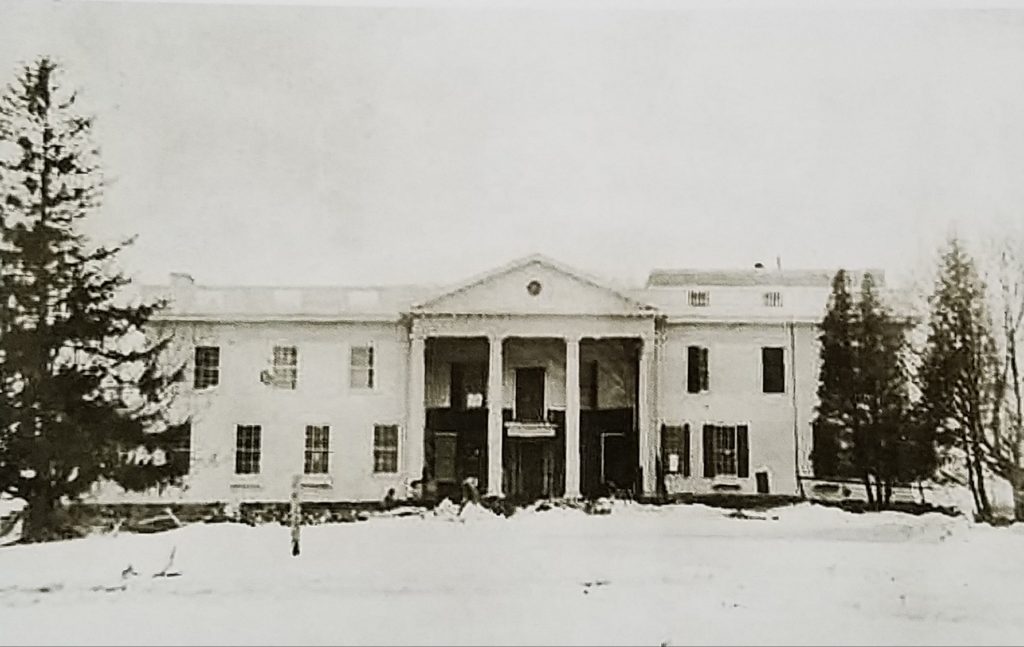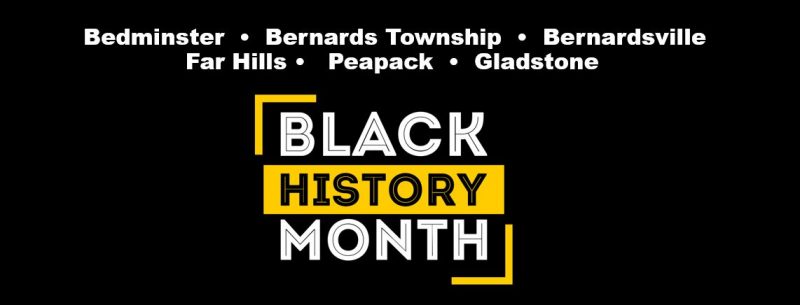So we’re over at the Bedminster Farmers Market and while meeting a few of the locals, one of the patrons mentioned “why don’t you research what’s going on over at the slave burial grounds in Bedminster. Here we are. We love a good local history lesson, so let’s do this.
Tucked behind the second Watchung Mountain off Lamington Road in Bedminster lies what had been identified as a slave burial ground. Back in the early 18th century the area was quietly farmed mostly by Dutch families who left what is now the Flatbush section of Brooklyn, New York. Names like Van Derveer, Van Dorn, Mellick and others settled around the Raritan River area to stake their claim.
A burial site for the “Black People in the Neighborhood”
On June 22, 1801, three African American Men — one free Negro and two slaves — purchased one tenth of an acre of land from Aaron Melick for the sum of thee dollars to establish a burying ground for the “Black people in the Neighbourhood.” This is the earliest known purchase of land by slaves for burials in New Jersey. The free Negro’s name was Robert Aaron, a local bee keeper, and the two slaves were Aaron Melick’s Robert and Aaron Van Doren’s Yaff.
The Somerset County Historical Society did most of the research. “Eight people so far have been identified as having been buried in the African Burying Ground on Hillside Avenue between 1840 and 1850, according to church records obtained by the Somerset County Historical Society. And about 50 people total could be buried at the site, which dates back to 1801.
Historian Thomas L. Buckingham of the Somerset County Historical Society did the initial research on the deeds that proved the sites existence. His research also placed into question the historical chain of ownership that lead to the 1935 construction of the old town hall on the historic cemetery. Mr. Buckingham went on to discover the names of eight black people buried there from 1840 to 1850 by locating the burial records of Bedminster’s Dutch Reform Church.
Tom found Dutch Reform Church archives that listed the names, age at death and cause of death for eight people who are believed to have been buried at the African Burying Ground between 1840 and 1850, along with the Bedminster Hillside Memorial Committee, which called itself a coalition of Bedminster residents, historians and NAACP members.” So far, these are people that were known slaves they’ve been able to identify:
- Betty Bullion, who died of old age on May 24, 1841
- Ellen Wortman, who died at the age of 12 on Aug. 17, 1842, from scarlet fever
- Margaret Sloan, who died at the age of 27 on June 17, 1842, from a brain infection;
- Harry (no last name listed), who died from dysentery on Sept. 20, 1849
- Sarah Cox, who died from consumption as an infant on Jan. 22, 1844
- Jack Suydan, who was 79 when he died from old age on Jan. 8, 1850
- Margaret Stuphen, who died from something listed as “discharge” at the age of 8 on March 27, 1845, though discharge was not explained by the historical society
- Loney Sloan, who died from a diseased leg at the age of 76 on April 19, 1848
Insight to the Times
Aaron Mellick’s slave Richard, and Aaron Van Dorn’s slave Zaff purchased the land for $3 with an unnamed free black man (a beekeeper) on June 22, 1801, as “trustees for the black people in the neighborhood of Bedminster and their successors forever for the use and purpose of a burying ground for the said black people in said neighborhood,” according to the deed of sale. According to historians, this is one of the first identified “freemans burial ground in the United States.”
One of the best books that sheds light on life of the time is “The Story of An Old Farm“, a first hand look of the Mellick’s family farm back in 1889. The Story of an Old Farm,” Andrew D. Melick, Jr. refers to the site as “God’s Acre.”
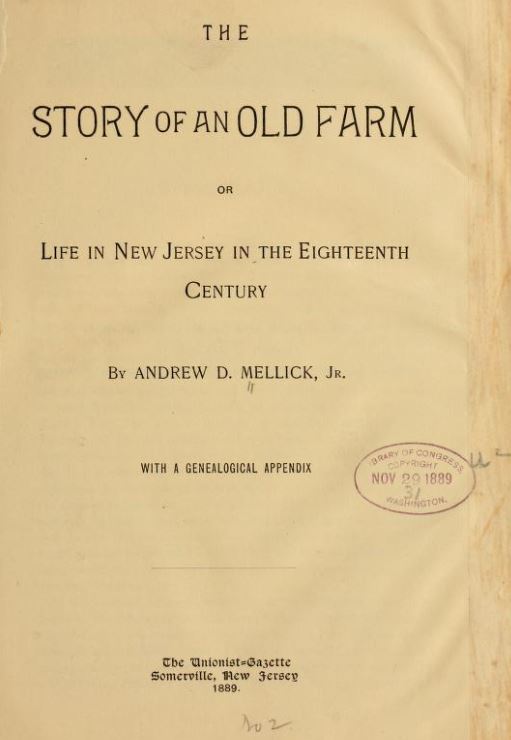
Local Support
We met up with Larry Jacobs, the current Bedminster Mayor couldn’t have been nicer and gave us a history lesson about the evolution of the property and what they’ve learned.
The township currently owns the site, as it is located on Hillside Avenue, the site of the former Bedminster Town Hall. The cemetery, which is located on the northern corner of the one-acre property, was not owned by James B. Dow, but was claimed by his estate, and was purchased by Bedminster in 1935. A 5,300-square-foot building that served as town hall was built there but was vacated in 2004 when the town relocated to a modern building on Miller Lane.
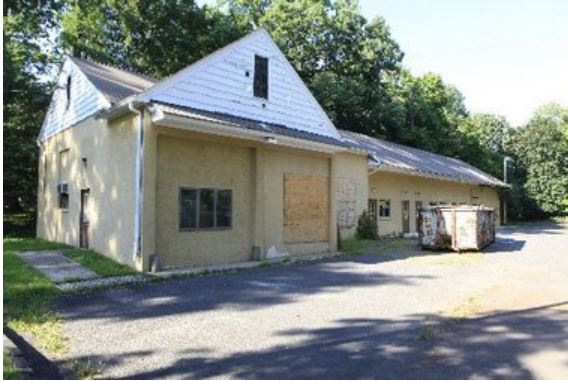
On June 17, 2013, the Bedminster Township committee voted to preserve a 10th of an acre of land as open space after the historical society shed light on the original intent of the land and unveiled a copy of the original deed for the land.
On December 2, 2013, Bedminster Ordinance #2013-016 was passed; AN ORDINANCE AUTHORIZING AND ACCEPTING THE MINOR SUBDIVISION AND CREATION OF THE PROPERTY IDENTIFIED AS BLOCK 28, LOT 1.01 IN THE TOWNSHIP OF BEDMINSTER, ALONG WITH AUTHORIZING THE DEED MEMORIALIZING SAME. This Ordinance subdivides a 66′ x 66′ portion of Block 28, Lot 1, also known as the Negro Slave Burying Ground (130 Hillside Avenue) making a new lot, preserving a historic area. “
Under the deal, the township sold the 0.622-acre tract to two adjoining neighbors for a total of $35,600.Officials said the land would be added to their properties but could not be developed under zoning. A separate 0.1-acre, municipally owned lot adjoining the north side of the tract, which was split off a few years ago after it was found to be an 19th century slave burial ground, will remain in pubic hands. Then Mayor Steven Parker praised the Historic Preservation Committee, under the leadership of Joan O’Reilly, for its work in “re-discovering” the 1801 slave cemetery at the former town hall property.
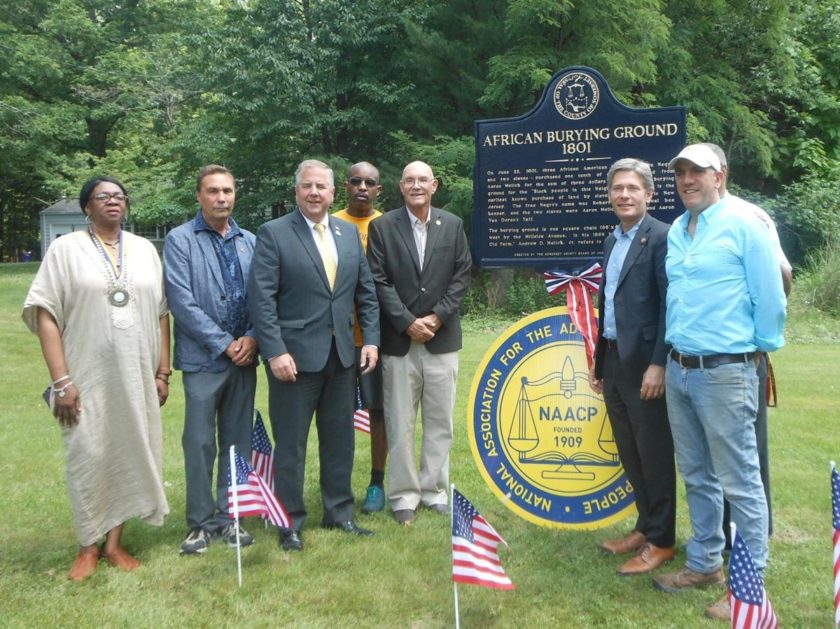
Additional Info
- You can view/read about the life of the Dutch Colonialists of Bedminster’s Mellick family in the book “The Old Farm” – Click Here
- There’s three other very interesting burial sites in Bedminster. One has the daughter of General Henry Knox (Julia), another has John Honeyman (1729—August 18, 1822) was an American spy and British informant for George Washington, (the Greatest American Spy), and another Black History Site (down by Trump National off Cowperthwaite Rd Road. Make a day trip of it and see all four!
- Credit also needs to be given to another historian, Nancy Piwowar, of the Plainfield Historical Society, for discovering the will and testament of one the free black man, Robert Aaron, who bought the site along with two slaves in 1801 for the sum of $3.

